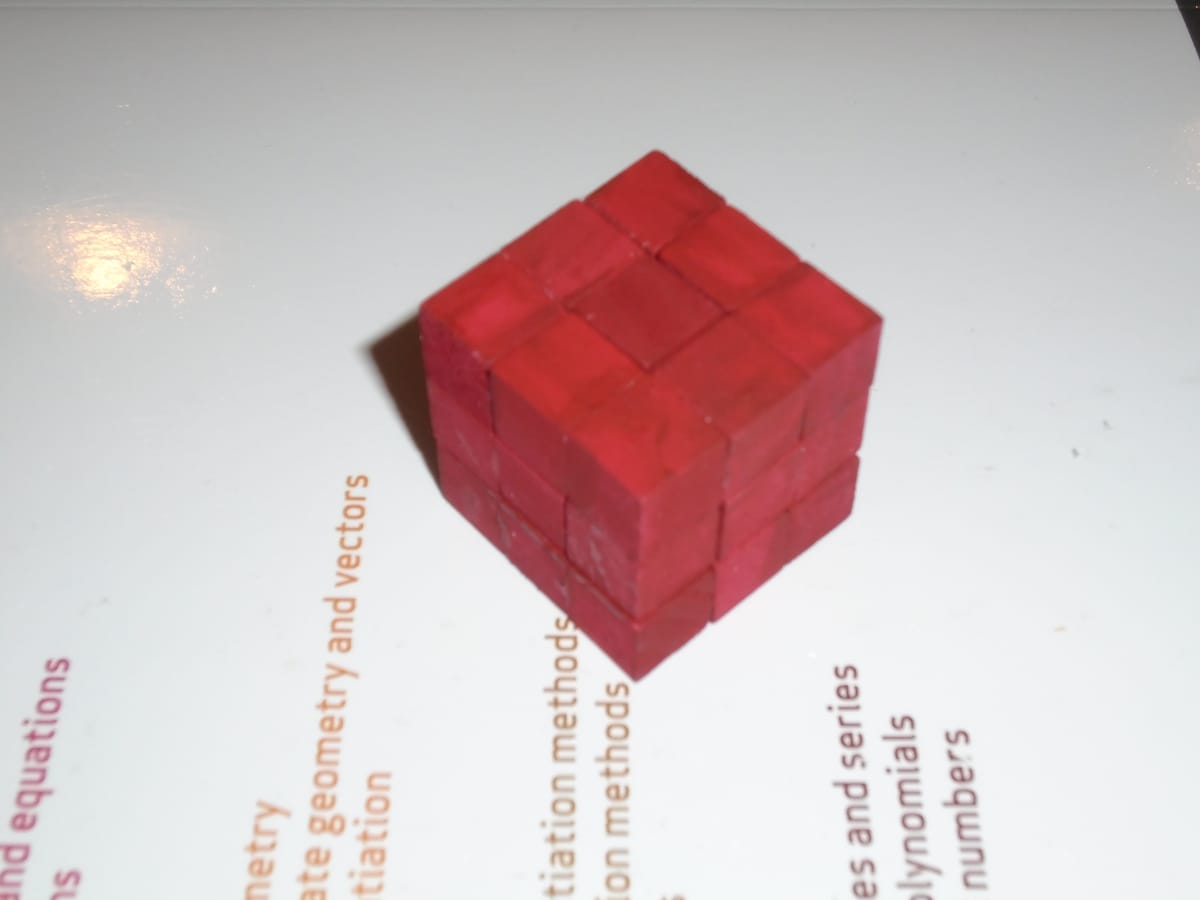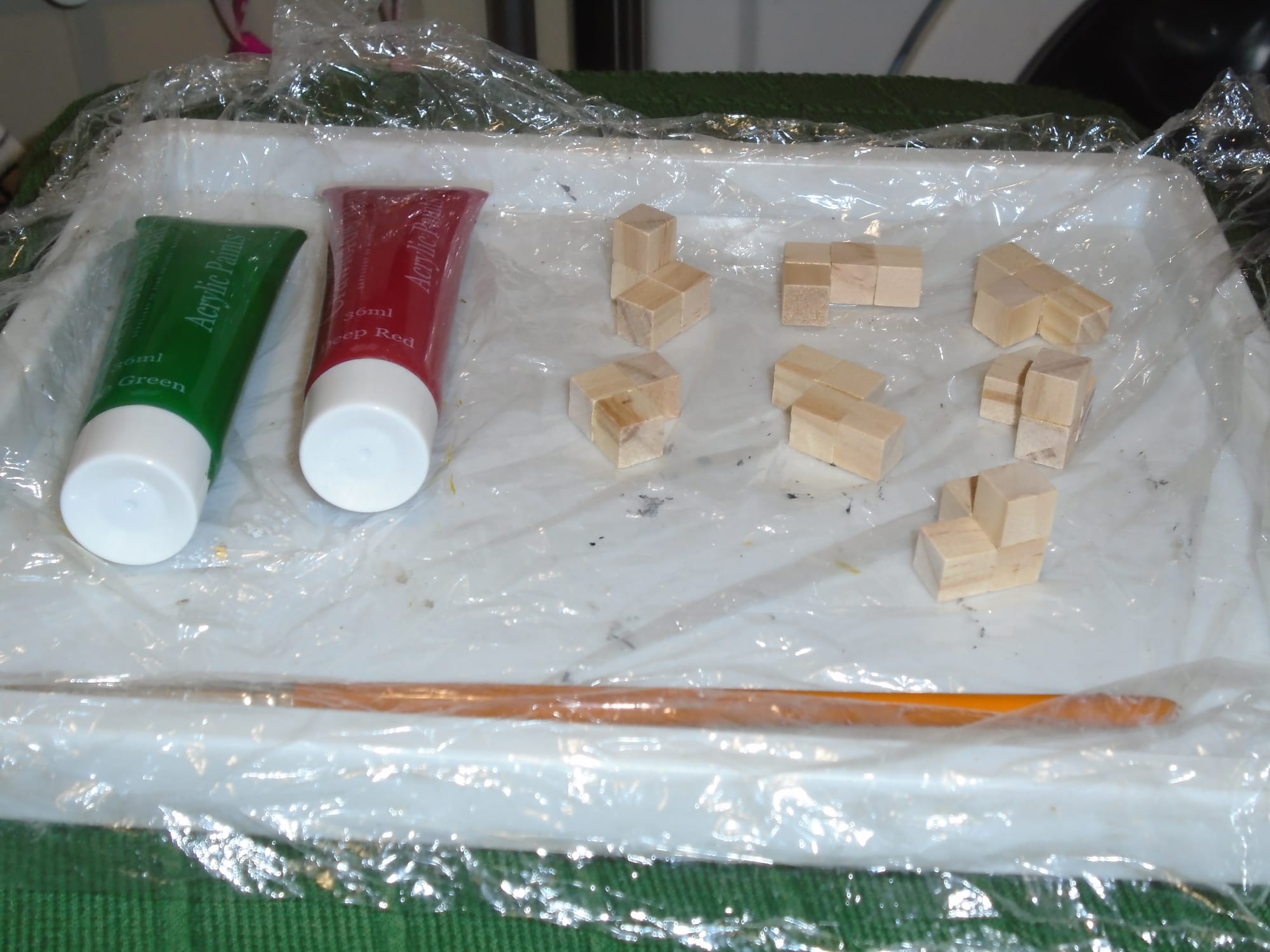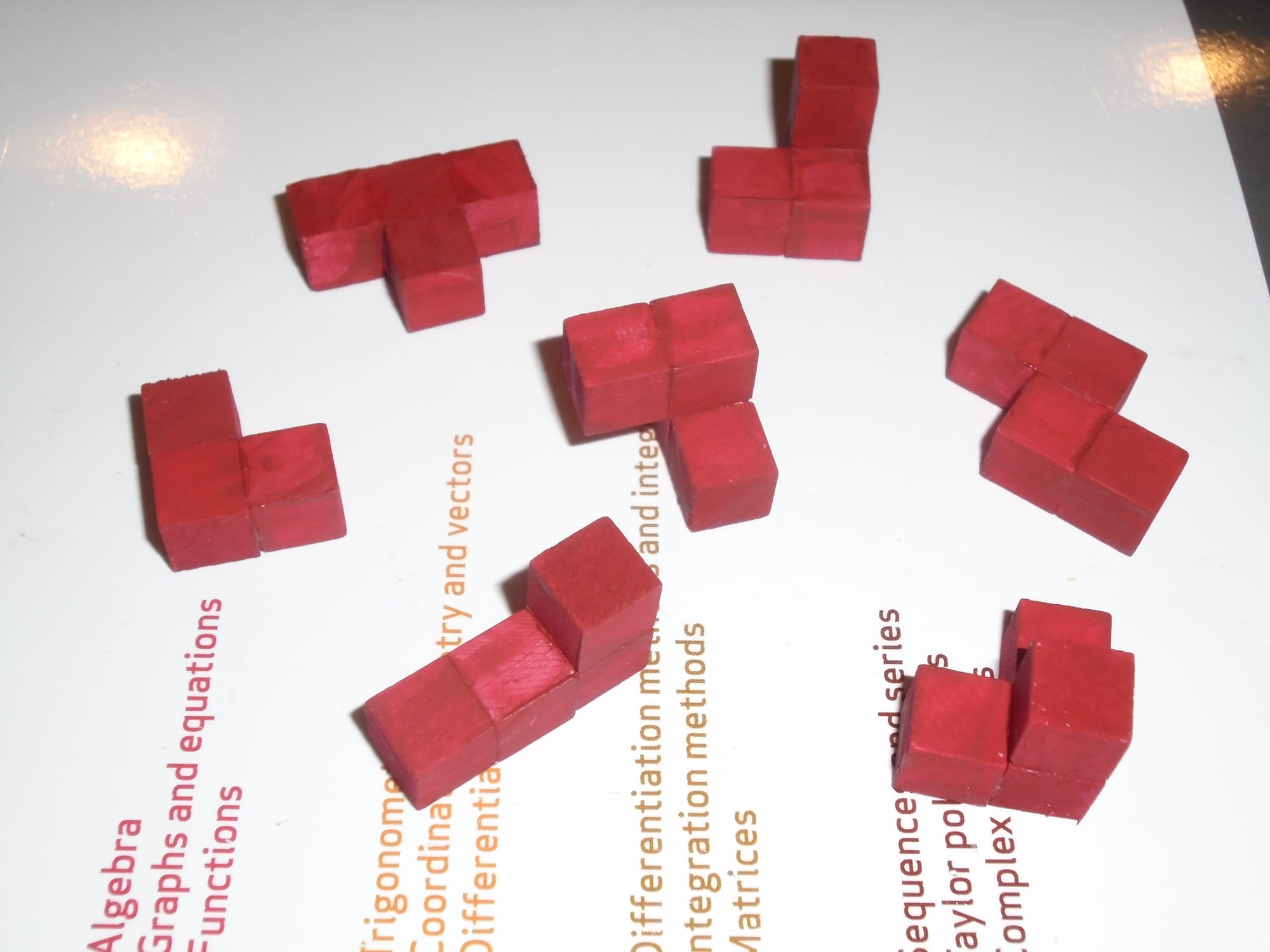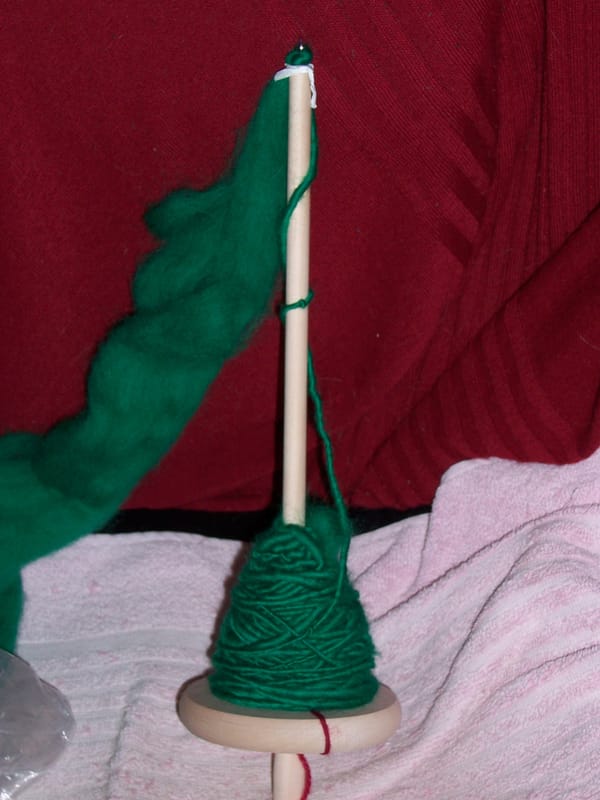Soma, delicious soma

I first came across the soma cube many years ago; I can't recall exactly how old I was at the time, but I would have been anywhere up to my early teens, because I wasn't yet old enough to be allowed to spend my pocket money regularly without having my prospective purchases parentally vetted. So I could not, at that time, go out and buy some wooden blocks and some glue and make myself one. That didn't happen till much later, by which point it was getting quite hard to source the blocks (it was before I was able to get on the Internet); I can't remember where I got them from in the end, but they were quite big, something of the order of 3 - 4 cm on each side, from memory. They were also not all the same colour; half of them were left natural and the other half were stained red, so the best I could do with what I had was to make a chequerboard soma cube (which is easier to solve, though it does rather limit the number of solutions if you want to keep the chequerboard effect intact). So it was rather large and not especially portable. I used to keep it in a bag and tie it up tightly so I could carry it about in its cube form if I wanted. I didn't carry it about very much.
Anyway, the soma cube was in one of Martin Gardner's collections based on his mathematical games columns for Scientific American; these books were called Mathematical Puzzles and Diversions and, straightforwardly, More Mathematical Puzzles and Diversions. I can't remember which of them it was; my father had them both. He had a nodding interest in recreational mathematics, but he thought most of the puzzles were too hard for him; so you'd have thought the soma cube would have been right up his street, because it is actually not hard to solve. It was invented by Piet Hein, which I recalled from the books, but I didn't realise until I saw the Wikipedia article that he invented it during a lecture on quantum mechanics delivered by Werner Heisenberg! Far from being annoyed that Hein's mind had wandered, Heisenberg was intrigued by the puzzle and apparently helped to publicise it.
By now I really don't need to tell you what happened to that soma cube. And a couple of weeks ago, I decided I'd like another one to replace it - preferably a smaller one, this time.
Well, you can get them on eBay, but a lot of them are plastic (which I do try to avoid if possible - it isn't always), and all of them, as it turns out, are a lot more expensive than just buying yourself a bag of 1 cm wooden blocks. For some reason, 1 cm wooden blocks are really easy to find on eBay. I don't know what most people do with them; I'm fairly sure most people who buy them are not making mathematical puzzles. However, there is clearly a thriving market for them, so I took full advantage and bought myself a bag of 200. That will make me two soma cubes and two sets of pentominoes, one of each for me and for a friend (I have not yet decided which friend, but I'm going to do some discreet sounding out of Athos regarding his interest in such things, because by hook or by crook I am going to find something I can make for him!). I'm fairly sure it was also Martin Gardner's books that introduced me to pentominoes, though it may just possibly have been Henry Ernest Dudeney, as I believe my father had one or two of his books as well. That works out at four puzzles for just over £6, which is a whole lot cheaper than buying them pre-made (you can pay over £30 for a set of wooden pentominoes on eBay).
The blocks finally arrived on Monday, rather later than advertised (I suppose the Christmas rush has started, so I should not be surprised); and so, yesterday morning, I did this.

In fact, my Ocado order usually arrives at eleven sharp (or near enough) on a Thursday morning, but yesterday it didn't, so I thought "I'll just make those pieces while I'm waiting". The blocks are so small and light that I didn't need to bother using a specialist wood glue; I do have Gorilla Glue for anything larger involving wood, but it's a nuisance (you need to damp it, as it's water-cured) and it also doesn't smell very good. So I just used the Trimits glue, which is designed for attaching beads and gems to fabric that will be washed (I think it is a souped-up rubber-solution glue; anyway, it does the job very well). I didn't need the flexibility it has, but the water resistance could possibly be useful. And, as it turned out, I had plenty of time. The Ocado driver was held up by floods, and then he couldn't find my flat. My house number is n, but I am directly opposite number 2n + 4; and given that n > 30, that's pretty confusing if you don't know the area. He'd managed to find number n + 1, but that's nowhere near me. (This isn't even the most crazily-numbered street in this town. I told him that if he was ever delivering on the road where some of my friends live, he'd better have a good stiff drink first so that he had some hope of understanding the state of mind of the original planner!)
Once the glue was dry - and it does dry pretty fast - the next step was to paint the pieces, which I did in two stages so that I wasn't putting any of them down on a wet surface.

As you see, though I was as careful as I could be to line them up straight, they're not cut quite as evenly as they might be; note in particular the vaguely Z-shaped piece on the right. The flash has emphasised the fact that the rightmost cube is a little taller than all the others. It's not a serious problem; as you can see from the feature photo, they do all fit together quite comfortably into a 3 x 3 x 3 cube, despite these little irregularities.
So now I have a much better cube than the original, and very soon I'm also going to have much better pentominoes than the ones I made whenever exactly it was, because those were cardboard. Very well reinforced cardboard, it's true; I used several thicknesses and then gave them a few coats of paint, so by the standards of cardboard pentominoes they were pretty decent. But, still, cardboard.
Athos used to be a programmer, so he should have a head for this sort of thing. Wish me luck...




